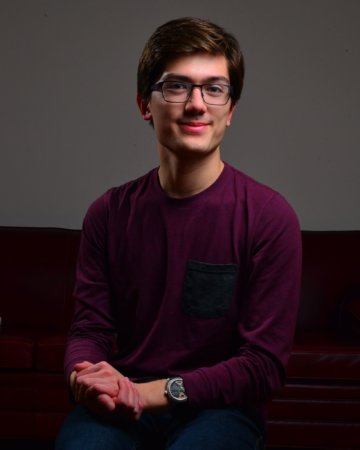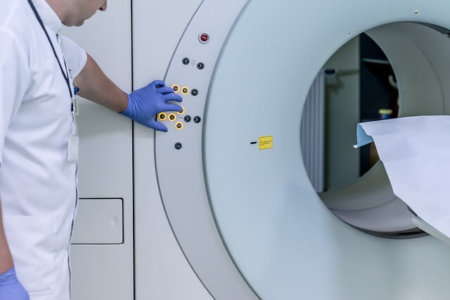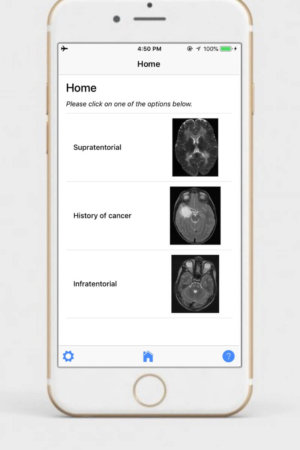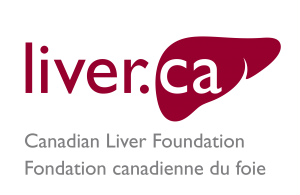Chartering A Map For Metabolic Liver Disease

Chartering A Map For Metabolic Liver Disease
When abnormal chemical reactions disrupt the body’s metabolism, the effects can be felt on many vital organs such as the heart and of course, the liver. These metabolic diseases can be challenging to diagnose, but research funded by the Canadian Liver Foundation is providing doctors and specialists with the tools they need to provide more effective and quicker answers to their patients.
In his research study, Kyle Hennig, a computer engineering student at the University of Alberta, determinedly worked to create a smartphone app capable of reading MRI imaging and providing a wealth of diagnostic information to users. This app was specially designed for use by an array of specialists like radiologists, pediatricians, surgeons and others to streamline the diagnosis of metabolic diseases.

We recently sat down with Kyle to discuss his passions for this project funded by the CLF, and why research like this means so much to the future of the Canadian healthcare system.
What drew you into a research project surrounding liver disease?
It was a combination of previous experience in which I developed software for the Stollery Children’s Hospital Pediatric Intensive Care Unit in Edmonton and had the opportunity to conduct research into the effectiveness of something called neural networks (a computer system that takes in information and processes it) in cardiac imaging.
Above all else, I believe that new technologies have a growing potential to positively impact healthcare, and I want to be a part of developing software that improves the lives of medical professionals and patients alike.
How did this research study come to be?
Our study was primarily inspired by the previous research of my supervisor, Dr. Ravi Bhargava, during his past summer studentships. Dr. Bhargava had students record hundreds of metabolic brain disorders and the steps that would typically be taken to diagnose each of them.
My responsibility was to translate this information into a machine-readable format that could in-turn be accessed by a clean, simple layout of a mobile app. It was essential for us to make this app easy to update in the future so that we may add new diseases to our database and improve the information available about them.

Why choose a smartphone app to develop over any other medium?
It takes minimal effort to download and install an app, and it allows a user to operate it wherever they take their phone, whether in a hospital or at home. Many of the different diagnoses found in our app could be previously found in medical textbooks and paper.
Having all these related diseases centralized in one location saves a doctor from having to search through dozens of resources, making it faster to find what you’re looking for.
What did your daily experience look like while working on this project?
Dr. Bhargava and I would share ideas during regular meetings, allowing users to identify a layout that would offer the best user experience. From these valuable conversations, we were able to implement features like a “dark theme” as we wanted to reduce the eyestrain for users in a darker environment (a common problem as today’s use of technology increases)
Significant portions of my time were spent writing code to make the app easy to use by creating a more organized structure and receiving visual feedback. We spent a reasonable degree of time creating simple versions of the app we could have medical professionals demo to obtain valuable feedback and guide our future updates.

How does an investigation like yours impact the average Canadian?
Our app is available to all of Canada. This means that we can increase the number of medical professionals who are able to fully understand the MRIs of patients that may have metabolic disorders, including liver disease, and get them the answers they desperately seek.
Liver disease is an important (though sometimes overlooked) health issue, and the Canadian Liver Foundation’s support in research projects like mine is helping create the push for better diagnoses into these diseases, as well as the prevention and development of cures that can benefit Canada as a whole.
I strongly encourage that more research intertwining healthcare and technology be pursued in the future. There is so much to uncover in liver disease and an incredible amount of potential for innovative technology to aid in that discovery.
Kyle Hennig is a computer engineering student at University of Alberta was the recipient of our 2018 Raj Bhargava Memorial Summer Studentship—a grant awarded to an undergrad student pursuing liver-related research under the guidance of leading liver researchers. Visit our website for more information on CLF-funded research project and how support from donors are helping to uncover ways to better prevent, diagnose, treat and cure all forms of liver disease.



